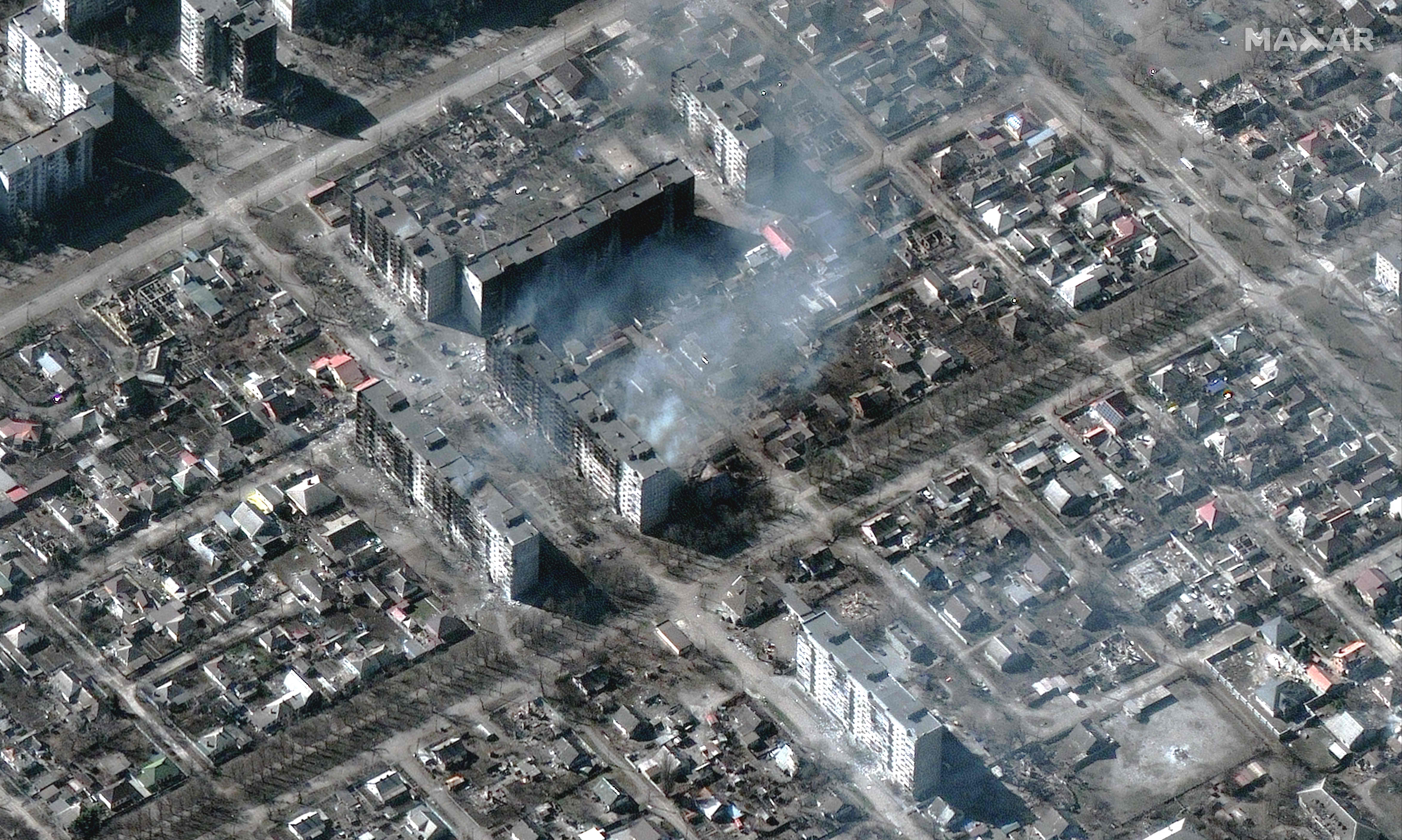Drone footage and satellite images of the shattered city of Mariupol have revealed the “horror” of the Russian onslaught.
The port city has seen the worst devastation of the war, enduring weeks of bombardment and street fighting as Ukrainian forces fight off Russian attackers.
Video taken in the skies above the district of Livoberezhnyi, to the east of the city, shows smoke rising through the air from destroyed apartments, shredded trees and dead grass left by Russian shelling.

Dr Mike Ryan, director of the World Health Organisation’s (WHO) health emergencies programme said the city’s civilian population were trapped and unable to seek medical help because of the fear of attack.
He said: “It doesn’t matter if the hospital is open or closed - you’re in a basement, you cannot move, you are stuck, you’re in trouble - if you’re having a difficult pregnancy or you’re having a cardiac crisis or a stroke, or if you’ve been injured, and the risks that the journey (to get to healthcare) can be deadly.
“And this is what we’re seeing in Mariupol.
“We’ve seen this again and again and again in urban warfare, when the journey to the health facility in itself becomes a life-threatening experience.
“The pressure that people must be under, the horror to sit and watch the loved ones potentially die because you cannot take them to healthcare... that in itself is an attack on health in denying access to facilities, by terrifying people to the point where they cannot move to get water, they can’t move to get food, they cannot move to get healthcare.”
Ukrainian president Volodymyr Zelensky said 100,000 civilians remain in a city that had a population of 430,000 people before the war. Efforts to get desperately needed food and other supplies to those trapped have often failed.
He accused Russian forces of seizing a humanitarian convoy and Deputy Prime Minister Iryna Vereshchuk said the Russians were holding captive 11 bus drivers and four rescue workers along with their vehicles.
In their last update, over a week ago, Mariupol officials said at least 2,300 people had died but the true toll is probably much higher.
Air strikes in the past week destroyed a theatre and an art school where civilians were sheltering.







